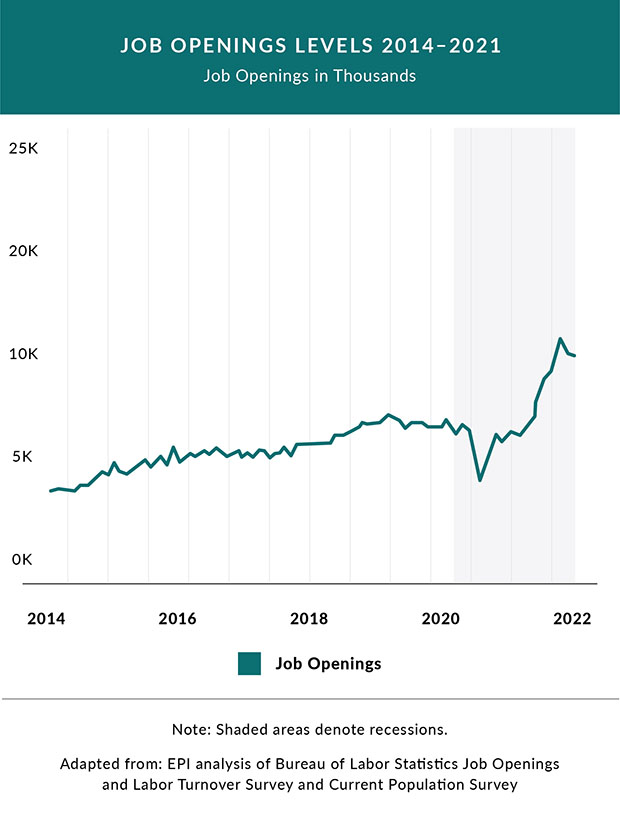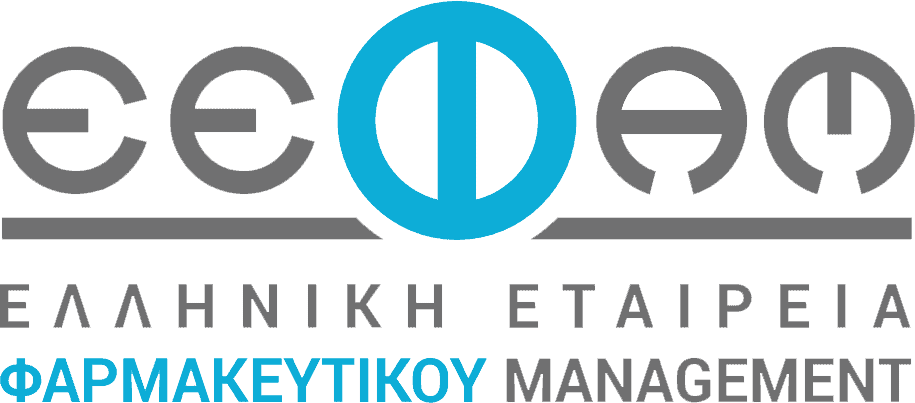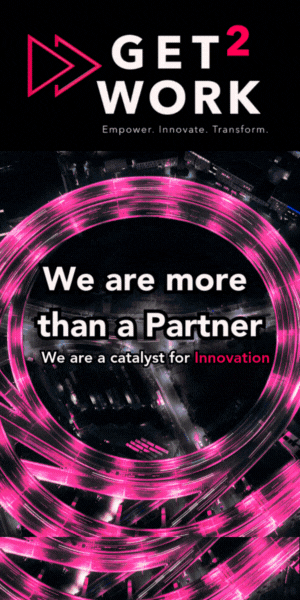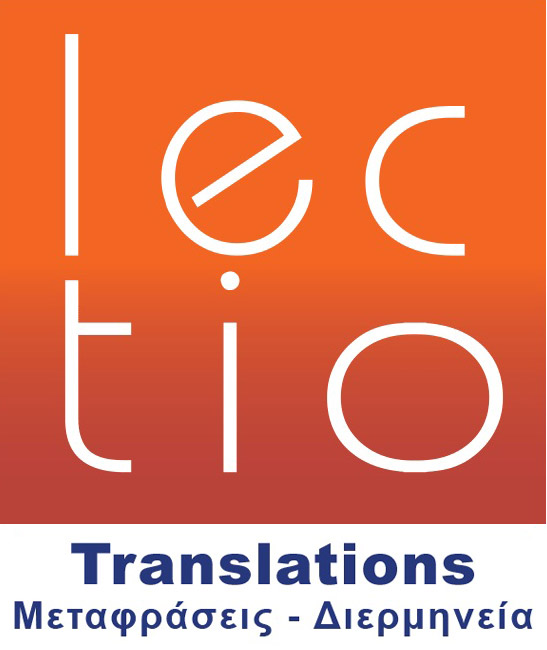Blog
Blog
What Matters Most: The Trends That Will Shape Pharma Marketing in 2022

INTRODUCTION
Welcome to the new world. It’s time to put aside any leftover notions of “getting back to the way things were.” It’s time to examine the ways in which our lives — and those of our patients, our caregivers, our HCPs, and all other stakeholders — have changed in the past two years.
It’s time to stop looking backward, and instead, look inside our organizations to recognize and weed out lingering, hindering assumptions and approaches. It’s time to identify the trends that will shape 2022 and move to meet them.
| The Way Things Were | The Way Things Are |
|---|---|
| Assuming things can’t, or won’t, change | Prepared to pivot |
| Being satisfied with slow processes | Agile processes that enable and encourage adaptation |
| Raw data in siloes without context or meaning | Predictive insights |
MUSICAL CHAIRS
The Great Resignation, and other factors, are changing the makeup of every group within pharma marketing — manufacturers and marketers, agencies and partners, patients and caregivers, HCPs and staff.
As what Harvard Business Review calls “a tidal wave of resignations” continues — with the highest rates for those ages 30-45 — and, as many pandemic-induced changes continue to alter to the structure of businesses worldwide (including pharma sales and marketing organizations) — many of our basic assumptions, approaches, and priorities need to shift.
More bleakly, according to estimates from the WHO and The Guardian/Kaiser Health News, by the spring of 2021, more than 100,000 healthcare workers globally had died from COVID-19, and more than 3,600 of those were in the United States. Losing these professionals contributes to the toll on the profession in itself, but that detrimental effect becomes exponential when the mental and emotional impact of each loss on colleagues is reckoned.
Some people’s changes were involuntary, due to the pandemic causing difficulties in childcare or business viability. Some were voluntary, due to prioritizing their or their family’s well-being. Many people have endured extreme hardship over the past two years, it goes without saying; but we can hope that as many people as possible will find themselves in positions that better suit their strengths and their lives.

Medical science liaisons and medical affairs personnel are becoming increasingly important customer-facing components of the team, as sales rep access continues to be limited.
“We’re seeing brands increase budgets for Medical Affairs,” says Stewart Young, SVP, Strategic Planning, Intouch Proto. “Given the decline in how effective sales forces and promotional content can be, medical content delivered by Medical Affairs and MSLs is definitely getting increased attention.”
“Given the decline in how effective sales forces and promotional content can be, medical content delivered by Medical Affairs and MSLs is definitely getting increased attention.” ~ Stewart Young, SVP, Strategic Planning, Intouch Proto
Nurse practitioners (NPs) and physician assistants (PAs) have always been prescribers, but as doctors shift out of their practices, NPs and PAs are an audience that shouldn’t be an afterthought. Both types of HCPs hold prescribing privileges everywhere in the United States – and increasingly globally, as well.
“The expansion of NP and PA roles in the healthcare ecosystem has increasingly been a consideration among clients,” says Jen Crabill, Group Media Director, Intouch Media. (And physicians agree, according to new data from IQVIA.) “It directly impacts how we, as a media team, assess potential target audiences and determine which are most relevant to a brand. Companies that have traditionally focused on targeting physicians should expand their marketing efforts to keep NPs and PAs more educated and informed.”
The market for marketing talent — in all industries, but also in life sciences specifically — is going to keep experiencing aftershocks as well. “Certain disciplines, like copywriters, have always been in high demand; now, we are seeing it across the industry,” says Susan Perlbachs, Chief Creative Officer, Intouch Group. “Compounding the issue for healthcare marketers, healthcare is growing overall, with more and more drugs coming to market. Agencies must find innovative ways to not just entice talent from within the industry but expand the talent market overall. (Something that relates to several of our projects in the works!)”
Taking Action
After a couple of unbelievably volatile years, 2022 will see staffing keep changing. That means your company; it means your partners and agencies; it means your medical practices; it means payers’ organizations; it means your patients’ livelihoods. Business will find themselves hiring; individuals will be changing jobs; and we will continue to reanalyze and reprioritize our audiences as they shift and change. We will all continue this game of musical chairs in 2022. Are you considering how this stress and change is going to affect all of those people … and, therefore, your audiences, and your brands?
DIGITAL MEDICINE
At the crossroads of computer technology and drug development, digital therapeutics have become a fully- fledged part of healthcare and a full competitor to traditional medications.
A new book released this month, The Future of Health: How Digital Technology Will Make Care Accessible, Sustainable, and Human, was written by Roberto Ascione, the CEO of Healthware International, with whom Intouch partners on the joint venture Intouch International.
As the industry organization Digital Medicine Society defines it, digital medicine is the use of technology for measurement and intervention in service of human health. This can include the use of wearables in clinical trials, or as therapy alternatives or adjuncts. Some even include the use of digital- mediated care, such as telehealth, in this definition.
“While wearable technologies are not new, we’re seeing, and expecting, increased pharma partnership with them,” says Sean Hartigan, SVP, Strategic Planning, Intouch Group. “It’s being demonstrated more and more that we can improve patient health through ongoing monitoring. Pharma alliances with wearable providers offer a new service and a health benefit. There’s also the potential for associated increased brand equity in these partnerships.”
While wearable technologies are not new, we’re seeing, and expecting, increased pharma partnership with them. ~ Sean Hartigan, SVP, Strategic Planning, Intouch Group.
Digital Medicine in the Healthcare Space
Apple and Johnson & Johnson announced plans to team up on a new study of whether Apple Watch can detect atrial fibrillation in seniors and encourage them to seek medical help.
In February 2020, clinicaltrials.gov showed ~460 wearables studies underway — and, according to Kaiser Associates and Intel, 70% of clinical trials will incorporate some type of wearable sensors by 2025.
Thirty-eight percent of U.S. adults say they would spend a lot of money on wearable technology that detects potential health issues.
In August 2021, the Mayo Clinic published results of a study demonstrating that remote patient monitoring of thousands of COVID-19 patients across the country lowered rates of hospitalization and mortality. These findings have been reflected in similar studies, including one from Kaiser Permanente.
The Veterans Health Administration (the VA) credits its own decades-long experience building and running the “business, clinical, and technical infrastructure” of “one of the largest remote patient monitoring programs in the United States” with its ability to care for more than 23,500 veterans.
Taking Action
“Where does pharma fit in digital therapeutics? Sponsorships, partnerships, open innovation — just to name a few ways,” says Alex Kareotes, Director, Media & Innovation, Intouch Solutions. “We can work to bridge the gap between pharma and tech in healthcare. Furthermore, we have an opportunity to leverage the results of outcomes research that uses digital therapeutics to provide better care together.”
MENTAL HEALTH
Empathy is dead. Or is it?
As Time put it in October 2021, “Re-entry into polite society is proving to be a little bumpy. Of course, it’s the people-have-lost-their-everloving-minds incidents that make the news, but they are also a reflection of a deeper trend; Americans appear to have forgotten their niceties, especially with those whose job it is to assist them.”
Flight attendants, retail workers, food-service workers, teachers — and, particularly, healthcare workers — are finding dealing with the public far more challenging than ever before. Two years into the fear, mental static, political upheaval, cancellations, and changes of the pandemic, a startling number of people seem to respond to day-to-day interactions with others with outsized anger.
And there’s plenty of mental fatigue to go around. People are tired, and that includes marketers. According to Accenture, nearly 70% of marketing executives say that the past year has completely exhausted their employees.
At the same time, the reckonings we’ve faced (with disease, with racism, with the upheaval of many facets of society) have brought discussion of mental-health issues to the fore. As therapy app Talkspace wondered, “Could the Pandemic Be the Thing That Actually Normalizes Mental Healthcare?” Some of our experts are seeing the same trend.
“The recent surge in mental health issues has carved a permanently larger spot in healthcare,” says Emma Weatherford, Associate Strategic Planner, Strategic Planning, Intouch Group. Crabill agrees: “Conversations around mental health – its research, treatment, and marketing campaigns – will continue to increase in the year ahead.”
Conversations around mental health – its research, treatment, and marketing campaigns – will continue to increase in the year ahead. ~ Emma Weatherford, Associate Strategic Planner, Strategic Planning, Intouch Group
Taking Action
Whether it’s our colleagues, our HCPs, our patients, our caregivers — or ourselves — everyone’s resilience is shot, and we have to work with an awareness of that to be successful. We are all, at best, pretty discombobulated these days. Consider how you can help. Make your messages easier to read. Make your offerings more meaningfully assistive and customer-centric. Consider what you’d need and, simply, do unto others.
INCLUSION & INEQUITY
The 2020s will, ideally, continue what 2020 and 2021 began, in acknowledging and addressing inequality, racism, poverty, and a lack of diverse representation. The conversation is louder and broader, but the need for real change remains great, especially in healthcare where it’s literally life or death.
“Inequities remain in health access, to clinical trials, diversity, inclusion, and belonging,” says Young. “Leaders are growing along their personal journeys of awareness, understanding, empathy, and sensitivity. But there’s work to do. Our clients are asking for our help with the awareness work they’re doing and the resources they’re providing.”
Perlbachs has seen similar needs elsewhere in organizations. “Increasingly, we’re providing guidance on how to ensure I&D in advertising and communications,” she says. “But I&D isn’t a question of casting specs. It’s about having a perspective and process that bakes I&D into strategies, briefs, and brainstorming sessions. Inclusivity must come at the very onset of the creative process.”
Diversity can’t fall back. We still need greater DE&I consciousness in pharma marketing. ~ Ed Reilly, Director, Strategic Planning, Intouch Group
Some industry efforts working to uncover, quantify, and address inequity in healthcare and healthcare marketing:
Health4Equity is a three-year effort to track and act on healthcare inequities, including COVID-19 vaccination, Black maternal health, and prostate- cancer screening.
The Conscious Language Guide helps HCPs find ways to eliminate carelessly hurtful language and improve the degree of empathy with which they communicate.
Erase the Line is a campaign on which Intouch Group has partnered with The Chrysalis Initiative, to help women of color receive more equitable treatment for breast cancer.
Taking Action
For advice and many specific actions you can take to begin to address inequity in pharma marketing, check out some of our articles from this year on this topic:
• Algorithms and Equity: Banishing Bias in AI
• Addressing Inequity: A Central Theme of SXSW 2021
• Urgency at SXSW: Innovate at the Speed of the Pandemic
• Anti-Asian Racism and Its Effects on Healthcare
• “Forever Welcome” Moves Forward With a Foundation
• Checking the Mirror: How We’re Doing at Diversifying Intouch
• Level Up Your Brand’s Approach to Hispanic Audiences
• Intouch Steps Up to Combat Healthcare Disparities Faced by Black Women
• Intouch Closes Hispanic Heritage Month With Two Conversations About Race
• Take Out the Garbage: 4 Ways to Ensure Equity in Healthcare AI
PATIENT EMPOWERMENT
The phrase “patient empowerment” dates back to the 1990s, but it’s definitely a paradigm shift that continues to grow in breadth and importance.
Back then — when Intouch was just getting started! — none of us quite imagined the capabilities an individual patient has today, nor the circumstances in which they find themselves. Whether it’s managing care, tracking health records, attending telehealth appointments, self- monitoring, adjusting privacy preferences, crowdsourcing recommendations for providers or treatment, the patient has power like never before.
It’s extensive ability, but it’s also heavy responsibility. As patients (just like in other aspects of our lives), we must create accounts, set passwords, check updates, read information, and act based on our best judgment. It gives us freedom, but with a cognitive cost. And misinformation and disinformation have made this a particularly mixed blessing, unfortunately.
But one thing is true, as Linda O’Neill, Director, Innovation, Intouch Group points out: “The patient is in the driver’s seat,” as they have to be: “There is so much integration, the patient must have a voice and own control of their data. Pharma needs to advocate for this, not against it. We need to convert the buzzword of integration into reality, with real-world solutions that are already well established in other industries (for instance, banking’s use of tokenization to enable data control).”
There is so much integration, the patient must have a voice and own control of their data. Pharma needs to advocate for this, not against it. ~ Linda O’Neill, Director, Innovation with Intouch Group
It’s also important to keep in mind the practicalities of the prescribing chain. Even an incredibly empowered patient, who understands a great deal about the treatment options available to them, and goes so far as to request a certain brand, may find themselves up against a situation where access to care or a restrictive formulary means that prescription is unaffordable to them. Increasingly, payers are an extremely important factor in all the we do. (And they benefit from hearing from patients, too!)
Taking Action
We know the power that individual lives and voices can have to make change. Rather than behaving in a reactive fashion, choose to further empower the empowered patients! Market research and social listening are a great start … provided they are just that — a start, after which a brand moves to involve the patient voice more powerfully. When do you involve patients? Is it rare, or as an afterthought — or is it from the very beginning? Do you design your experiences, processes, and tools to give them as much control as possible? One way to involve patients early: consider adding them to advisory boards.
HYBRID WORLD
In the early 2000s, words like e-commerce and e-business were common (even the question of when to stop hyphenating “e-mail” was a whole thing) but today, they just look outdated. Today, words like “virtual,” “remote,” and “hybrid” are similarly worn out, and soon, specifying them is going to look just as retro.
For everything from care delivery, to sales calls, to workplace environments, to medical congresses — online options are going to remain a choice, if not a default. This is excellent for those for whom travel costs, family obligations, disability, or other situations may have precluded participation before. In fact, it’s what many groups have been calling for, for many years. While it’s welcomed and increasingly commonplace, it is still a change that requires adjustment, and those will continue throughout 2022.
Regarding the need for a hybrid environment in the workplace, Perlbachs says, “Will we? Won’t we? When? The question of whether or when we ‘go back to the office’ doesn’t seem to let up. Stop already. The world will never be what it was. Some will go back. Some won’t go back. Others will be hybrid. And if companies try to make it any ONE of those things, good luck staying competitive. Less tech- forward, evolved agencies insisted, ‘We’re going back,’ citing the phrase, ‘We’re better together’ — but it’s hard to say you’re ‘better together’ when it means a large percentage of your employees leave altogether for other jobs.”
And regarding the hybrid reality of care, Kareotes says, “As funding in digital health and healthcare innovation continues to boom in the upcoming years, the fundamental consumer expectation of their healthcare experience will continue to shift toward a more convenient, virtual-first modality, from diagnosis to chronic disease management. While some early adopting pharma brands have taken advantage of telehealth for driving Rx lift, we expect to see pharma drive the trend at an enterprise level by establishing more complete telehealth strategies, including support for chronic disease management, side effect management, adherence tools, and ongoing remote monitoring integrations.”
Abidur Rahman, VP, Innovation, Intouch Group, adds, “For the last year or two, we’ve seen people invest heavily in custom virtual booths for individual conferences, but in future we expect to see ‘repurposed’ booth concepts, which keep consistent concepts that work well for both in-person and virtual experiences. For example, booth theater, such as AR, translates well both in person and virtual, and requires fewer touch points, so we may see AR use increase at hybrid events in 2022.”
We may see augmented reality use increase at hybrid events in 2022. ~ Abidur Rahman, VP, Innovation, Intouch Group
Crabill agrees, saying “Virtual reality as a healthcare solution is a particularly interesting facet of this — a step outside of the massively discussed topic of telehealth! — and especially important as a treatment option for psychiatric disorders like PTSD, anxiety, and dementia.” Sources from Frontiers in Psychiatry (“an innovative clinical tool”), to Cedars Sinai (“the future of healthcare”), to Forbes (“a new frontier in medical innovation”) agree.
Taking Action
Intouch’s strategic planners point out that going digital hasn’t solved all of the prior problems, saying: “Telehealth is here to stay, but with unexpected consequences — it hasn’t delivered on the promise of reducing physician time demands.” Can pharma work to address this challenge for our HCPs, both in small ways — improving our educational efficiency, for instance — and in larger ones — working to address some of the structural problems in care delivery?
Andrew Grojean, Associate Director, Innovation, Intouch Group, notes that pharma marketers have an opportunity to work to make change with our tech partners, too, saying: “There is a degree of permanence to ‘remote’ attendance: It’s going to become part of the expected norm in all that we do. Pharma has a keen opportunity to identify how we can influence the evolution of platforms like Zoom and Gather, for all engagement opportunities — not just virtual conferences, but engagements for, and between, HCPs and patients, too. We can consider ways to enable these types of engagements for all of our stakeholders.”
NEXT-LEVEL PHARMA
The pandemic provided the opportunity for our industry to show just what we are capable of: rapid vaccine development, remote clinical trials, telehealth care, etc. Few would have claimed that much of what we’ve seen would have been possible. Now, we know it is.
Does this herald a new era of pharma R&D? More collaborative, technology-embracing, data-driven? Maybe.
Jeff MacFarland, VP, Group Innovation Director, Intouch Group, says that moving toward transparency and efficiency will continue to be a trend in 2022, affecting the industry as we continue to improve.
“Business is not ‘usual’ anymore. Default approaches need to be updated and, as experts, we will need to be stewards of that change,” cautions MacFarland.
Business is not ‘usual’ anymore. Default approaches need to be updated and, as experts, we will need to be stewards of that change. ~ Jeff MacFarland, VP, Group Innovation Director, Intouch Group
Intouch innovation experts agree: It’s time to eliminate tools and solutions that are cumbersome, ineffective, non- contributory to the value proposition, little-used, or outdated. Reassess the value of ‘standard’ approaches. Is the value still there? Point budgets to more intriguing value instead. Make sure there is data collection on all projects, not just in silos. Obey a standard data schema for all records. And prototype more often: testing, learning, and failing fast.
AI applications are increasingly popular, and powerful, but data collection isn’t always sufficient to support the opportunities that exist. They need abundant, well-organized training data to produce smart results. Optimizing the data pipeline within an organization might not look exciting, but it can make all the difference.
CONCLUSION
We’ve all probably thought wistfully about something in pre-pandemic times — whether it was the relative ease with which something could be accomplished, a simple pleasure you took for granted, or just the feeling of predictability that made it a little easier to get through the day.
But you’re probably also wise enough to know that, as they say, nostalgia isn’t what it used to be. Things weren’t perfect then; and even if they were, time doesn’t work backward.
“As an industry — and a world — we’re in a time of ‘intentional reinvention,’” said Wendy Blackburn, Executive Vice President, Intouch Group. “The opportunity is before us to purposefully rebuild better than before.”
What we communicate, to whom we communicate, the ways we do it, the messages we prioritize; the ways healthcare is delivered; the world in which our messages are received and in which our audiences live their lives: All of it is vastly different than it was two years ago, and none of it is reverting to the way it was.
As we look ahead to 2022, we must do so actively. We have a new landscape before us: full of unknowns, but also full of opportunity. The organizations that put too much on pause in 2020-2021 are paying the price, and those that continue to remain overly hesitant will be left behind entirely. We have the benefit of two years of rapid, pressurized learning, and brands that want to effect change can’t delay putting those lessons into action.
Contact your Intouch team to discuss how any or all of these trends can be put to work for your brands in the coming year.
Contributors
Wendy Blackburn, Executive Vice President, Intouch Group; Jen Crabill, Group Media Director, Intouch Media; Paige Drummond, Art Director, Intouch Group; Andrew Grojean, Associate Director, Innovation, Intouch Group; Sean Hartigan, SVP, Strategic Planning, Intouch Group; Alex Kareotes, Director, Media & Innovation, Intouch Group; Penelope Larson, Senior Editor, Intouch Group; Jeff MacFarland, VP, Group Innovation Director, Intouch Group; Sarah Morgan, Writer & Consultant, Intouch Group; Linda O’Neill, Director, Innovation, Intouch Group; Adrian Ordorica, Innovation Developer, Innovation Intouch Group; Onur Orhan, Associate Innovation Developer, Intouch Group; Susan Perlbachs, Chief Creative Officer, Intouch Group; Abidur Rahman, VP Innovation, Intouch Group; Ed Reilly, Director, Strategic Planning, Intouch Group;Keith Spisak, Group Media Director, Paid Search, Intouch Media; Mike Strassberg, SVP, Sales & Marketing, B2D; Emma Weatherford, Associate Strategic Planner, Strategic Planning, Intouch Group; Stewart Young, SVP, Strategic Planning, Intouch Proto.
Πηγή: eversanaintouch.com





